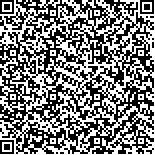下载中心
优秀审稿专家
优秀论文
相关链接
摘要

为应对COVID-19疫情而采取的非药物干预措施显著改变了城市社会经济活动,但其变化特征和时空模式仍不明确。本研究以美国20个大城市为例,获取NPP-VIIRS月度合成数据分析2020年2—4月COVID-19疫情初期城市夜光亮度变化的空间格局、衰减特征和用地类型差异。结果表明,疫情防控措施导致美国城市夜光亮度普遍变暗,平均降低5%—8%。夜光变化呈现明显“中心—边缘”空间结构特征,夜光降低幅度随到城市中心距离增加而减小。不同用地类型夜光变化幅度存在差异,纽约居住用地和航空设施用地夜光亮度降低幅度最明显,分别下降12%和11%。芝加哥各类用地夜光亮度普遍下降20%左右,除体育设施用地外,其他各类用地夜光亮度一个月后有所恢复。夜光遥感有效反映了城市社会经济活动变化,在监测评估突发事件社会影响方面具有重要应用。
The COVID-19 epidemic swept the world and continues to spread. Without effective medical treatments and vaccine during the early stage of the pandemic, local governments in various countries had to lock down cities and adopt non-pharmaceutical interventions (NPIs), such as the stay-at-home order and social distancing. The NPIs against the COVID-19 epidemic have significantly changed the socio-economic activities in cities. However, the characteristics and patterns of urban socio-economic activities under this influence are still unclear. Given the development of earth observation technologies, large-scale changes in socioeconomic activities can be captured by satellites through remotely sensed Night-Time Lights (NTLs). In this study, we selected 20 major cities in the United States, including Atlanta, Chicago, Dallas, Denver, Detroit, Houston, Kansas City, Los Angeles, Miami, Minneapolis, New York, Orlando, Philadelphia, Phoenix, Pittsburgh, Salt Lake City, San Francisco, Seattle, Saint Louis, Washington D.C., to analyze the spatio-temporal variations of NTLs caused by the lockdown of cities. The first round of the COVID-19 epidemic occurred in the United States in mid-March 2020. Since March 2020, American cities have successively issued stay-at-home orders, but differences in the time and strictness of policy implementation were noted. Large cities have higher population density and intensity of social activities, so they are more susceptible to infectious diseases. The diversity of lockdown dates and the strictness of lockdowns in the cities in the United States are conducive to investigating the spatio-temporal variations of NTL. We acquired monthly averaged NTLS products of February, March, and April 2020, which were from Visible Infrared Imaging Radiometer Suite (VIIRS) Day/Night Band (DNB) onboard the Suomi National Polar-orbiting Platform NPP. We further analyzed the spatial pattern, distance decay, and disparities in land use types of changes in the NTLs. Results show that the NTLs generally dimmed by 5%—8% in U.S. cities because of the lockdown of cities. In six cities, the luminous brightness dropped by more than 10%: Chicago, Dallas, Denver, Detroit, Minneapolis, and St. Louis. Among them, Minneapolis showed the largest decrease in luminous brightness, with a decrease of approximately 40% in March. The spatial change of the NTLs shows an obvious “core-periphery” pattern, indicating that the reduction of the NTLs declined with the distance from the city center, mainly because the central area of the city is a concentrated commercial area. After the closure of the city, commercial activities dropped significantly, resulting in an obvious reduction in NTLs around the city centers. The reduction of the NTLs varied among the diverse urban land use types. In New York, the NTL decreased the most on land for residence and aviation facilities by 12% and 11%, respectively. In Chicago, the NTL generally decreased by 20% in all types of urban land, and NTL recovered after one month of the lockdown of the cities in other urban lands, except the sports facilities land. This study only analyzed the spatio-temporal changes of NTLs. In the future, the results of this study can be combined with multi-source data to explain the driving force of NTL changes. Night-time light remote sensing effectively reflects the urban socio-economic dynamics with an important application in monitoring and assessing the socio-economic impacts of emergencies.

